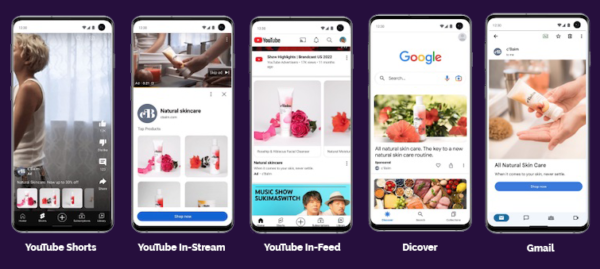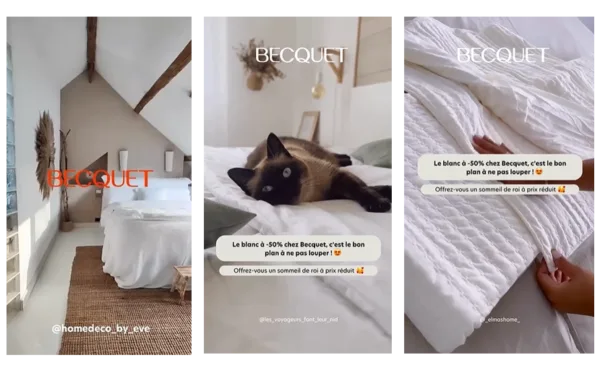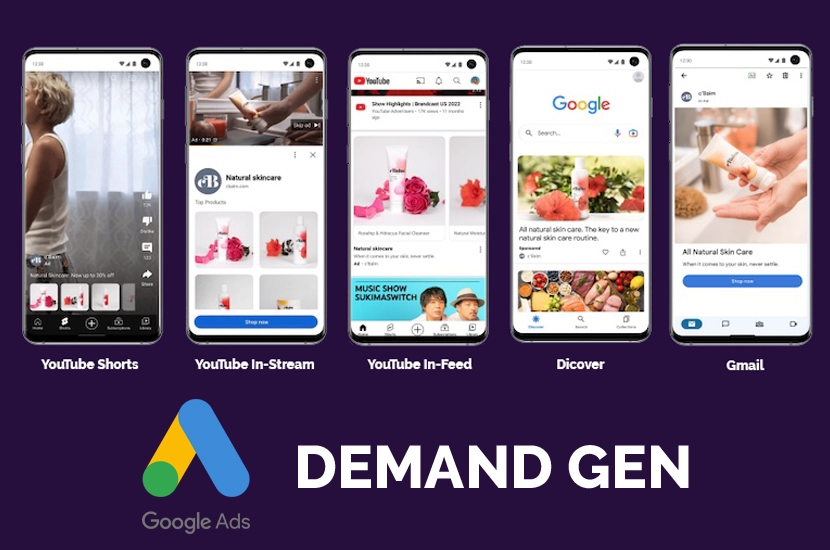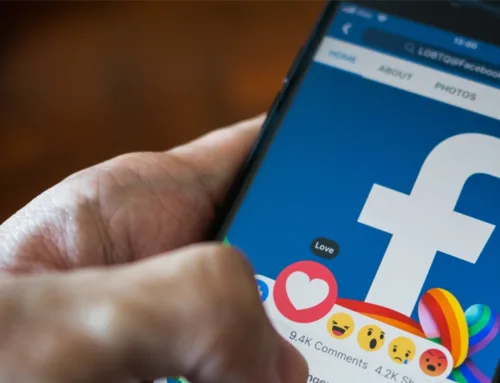With changing user behavior, the rise of short video formats and the gradual disappearance of third-party cookies, Google has launched a new generation of advertising campaigns in 2023: Demand Gen. Aimed at stimulating interest upstream of the purchase path, these campaigns harness the power of YouTube, Discover and Gmail to generate demand among high-potential audiences.
Demand Gen: a response to the new challenges of digital marketing
In a context where advertising needs to capture attention very early on in the conversion tunnel, Google offers Demand Gen, a solution designed for the so-called “pre-consideration” phase. Unlike direct conversion campaigns (such as Performance Max), Demand Gen is aimed at audiences who do not yet know the brand or are not yet ready to buy.
This type of advertising campaign is fully in line with brandformance strategies, where brand awareness and performance are no longer opposed but intelligently combined. The aim: to create desire, generate interaction and pave the way for conversion.
What is a Demand Gen campaign?
The evolution of Discovery campaigns
Demand Gen officially replaces Discovery’s campaigns, while bringing significant new features. Where Discovery relied mainly on the Discover and Gmail streams, Demand Gen strongly reinforces its presence on YouTube, particularly in Shorts and In-Stream formats. It’s a hybrid lever, combining social mechanics (short videos, scroll, swipe) with Google’s targeting and conversion capabilities.
Main objectives of Demand Gen campaigns
Demand Gen campaigns are designed to :
- Create awareness around a brand or product;
- Stimulate interest and nurture consideration;
- Generate qualified clicks and indirect conversions.
They are particularly suitable for
- E-tailers who want to expand their customer base;
- For D2C brands seeking rapid brand recognition;
- B2B companies looking to feed their pipeline.
Demand Gen: broadcast locations
Demand Gen ads appear on :
- YouTube (YouTube Shorts, In-Feed YouTube, YouTube home stream, YouTube videos to watch next, YouTube search and Google video partners)
- Discover (Google’s personalized news feed);
- Gmail (in the Promotions tab).
- The Google Display Network has also recently been added

These locations combine high visibility and immersive experiences, with visual and video formats designed to capture attention.
Changes in Demand Gen since early 2025
Since the beginning of 2025, Google has enriched Demand Gen with new features that facilitate the creation, optimization and delivery of advertising content across multiple platforms. These developments aim to improve campaign performance without requiring a complete redesign.
More control over ad distribution
Advertisers now have more precise levers for choosing where their ads appear:
- Customized placement on YouTube, Discover and Gmail: you can now select precise broadcast locations.
- Specific targeting for YouTube Shorts: reach audiences who consume short, vertical content more effectively.
- Extension to the Google Display Network: your campaigns can now draw on Display inventory to extend their reach.
More powerful creative tools
To help you produce more engaging ads adapted to different formats, Google is introducing :
- Vertical image formats (9:16), perfectly suited to shorts.
- A tool for generating short videos, making it easy to create more concise, large-scale versions.
- A new creative workflow, including shareable previews for easy validation and collaboration.
Features designed for e-commerce and omnichannel operations
For advertisers who sell both online and in-store, there are a number of improvements to better connect the different channels:
- Better integration of the product flow, to enrich ads with the right visuals and information.
- Display of local inventory, to attract customers to nearby physical points of sale.
- Omnichannel auctions, which automatically optimize performance whether the purchase is made online or in-store.
How Demand Gen campaigns work
Intelligent targeting combining automation and strategy
Google offers several targeting levers:
- First-Party Audiences (customer lists, site visitors, CRM segments, etc.) ;
- Similar audiences automatically generated by Google with groups of people who share the characteristics of those present in First-party audiences.
- Optimized Targeting uses AI to target the users most likely to convert, taking into account your objectives.
- Purchase intent audiences (users who have expressed an interest in a product or theme);
- And in some cases, contextual targeting.
The platform relies on machine learning to adjust bids, locations and formats based on performance signals. However, it is possible to guide the algorithm through its own audiences or exclusions.
Rich, engaging advertising formats
Demand Gen campaigns use :
- Image carousels (similar to Meta formats) ;
- Unique images for Discover ;
- Videos, including short formats (very popular with the under-35s).
Google encourages the use of multi-asset formats, which mix video and images to maximize distribution opportunities. It is also possible to use generative AI tools to produce visual variations from a main visual.
Budgets and auctions
Demand Gen works with automatic bidding strategies based on objectives:
- Maximize conversion value
- Auctions at target ROAS
- Maximize conversions
- Target cost per share (CPA)
- Maximize clicks
The advertiser sets a daily or shared budget at account level. He can also define priority conversions and choose allocation windows.
Measuring and steering the performance of Demand Gen campaigns
Demand Gen is natively integrated into the Google Ads environment. The main metrics available are :
- Interaction rate (engagement, views, clicks) ;
- Post-click and post-print conversion rates ;
- Conversion value ;
- Comparison of different formats and locations.
The campaign can also be linked to Google Analytics 4 for more granular tracking of post-click user behavior.
What are the differences between Demand Gen and Performance Max?
Two approaches stand out in the Google Ads ecosystem: Demand Gen and Performance Max. They meet different objectives, but can be complementary.
| Demand Gen: to build awareness and interest | Performance Max: for rapid, large-scale conversion |
|---|---|
Demand Gen campaigns are designed to capture attention upstream of the purchasing process. They stimulate demand by broadcasting high-impact visual content on high-audience platforms such as YouTube, Discover or Gmail. The aim: to inspire, inform and engage, even before the user expresses an intention to buy. This type of campaign is particularly well suited to brands that want to:
By working on brand awareness and affinity, Demand Gen lays the foundations for a lasting relationship, essential for building a loyal audience. |
Performance Max campaigns are results-oriented. They use artificial intelligence and automation to serve your ads across all Google inventories (Search, Display, YouTube, Gmail, Maps, Discover), with the priority of maximizing conversions according to your defined objectives (sales, leads, store visits, etc.). Objective: generate a rapid return on investment through automatic optimization of placements, bids and audiences. Performance Max is ideal for :
|
A winning strategy: combining Demand Gen and Performance Max
It’s important to understand that these two campaigns don’t conflict, they complement each other. While Demand Gen prepares and feeds the conversion funnel by attracting qualified prospects, Performance Max converts these audiences at the right time.
A hybrid approach, combining demand generation and performance-oriented activation, enables you to:
– Maximize your brand’s impact across the entire customer journey,
– Create synergy between branding and sales,
– Optimize your advertising investments over the short, medium and long term.
How to successfully launch your first Demand Gen campaign?
Key implementation steps
- Define the objective: lead generation, qualified traffic, brand awareness…
- Create audience segments: CRM file uploads, remarketing, similar audiences.Prepare creative assets: short videos, punchy images, catchy titles.
- Choose your bidding strategy: target CPA or ROAS according to your business objectives.
- Set up tracking: via Google Ads and/or GA4.
- Launch and monitor the campaign: a minimum 2-week learning phase is recommended.
Good practices to know
- Take care with your visuals: Demand Gen campaigns are very visual, so creative quality is key.
- Test different formats and messages: A/B testing remains a powerful lever.
- Give the algorithm time: avoid changing parameters too often during the launch phase.
- Analyze performance by asset: remove the worst performers, reinforce the best.
The future of Demand Gen in Google’s strategy
Demand Gen campaigns are part of the growing automation of digital marketing. Driven by advances in artificial intelligence, they foreshadow more fluid, targeted advertising, more focused on the user experience.
With increasingly fine-tuned integration with GA4, Consent Mode and generative AI, Demand Gen is set to become a strategic pillar of media plans, especially for brands with D2C ambitions or long purchase cycles.
Demand Gen campaigns represent a tremendous opportunity for advertisers wishing to capture a qualified audience upstream of the purchase path, while leveraging the most engaging formats in the Google ecosystem.
Easy to deploy, rich in data, and compatible with ROI-oriented strategies, they are a complementary lever to Search or Performance Max campaigns. As long as you invest in well-crafted visuals, segment your audience well, and let the algorithm learn, they can become a powerful engine of growth and acquisition.
If you’d like to find out more about the Google Ads ecosystem, take a look at our guide to good reasons to run Google Ads campaigns.
Case study: Demand Gen campaigns boost Becquet Belgium’s brand awareness and recognition

Background & strategy
Becquet, a specialist in household linen, wanted to raise its profile and strengthen brand awareness in Belgium. To meet this objective, Effinity set up two complementary campaigns on Google’s Demand Gen format, combining broadcast power and intelligent targeting:
An “Influence” campaign, focused on inspiring and engaging content created by influencers.
A “Generic” campaign, more direct and informative, focused on highlighting Becquet’s products and offering.
The results
Influence” campaign: emotion for memorization
- Printing: 673,130
- Clicks: 17,643
- Click-through rate (CTR): 2.62
- Post-display conversions: 417
The “Influence” campaign offered high visibility and good engagement, with an above-average click-through rate for awareness campaigns. Above all, the high number of post-poster conversions testifies to a strong memorable impact. The inspiring content, driven by familiar faces and authentic stories, captured attention and left a lasting impression.
Generic” campaign: A direct message that inspires action
- Printing: 490,271
- Clicks: 13,787
- Click-through rate (CTR): 2.81
- Post-display conversions: 157
With a slightly higher CTR, this campaign generated a good level of immediate engagement. However, the post-posting impact was more limited, suggesting a one-off curiosity rather than a lasting memorization effect.
Key lessons
- The “Influence” approach promotes brand memorability: emotional, embodied and narrative content is more effective at anchoring the brand in consumers’ minds. Influence campaigns have proven their ability to generate long-term commitment.
- The generic message generates immediate interest: useful for capturing attention quickly, more direct content has a better click-through rate, but with more modest post-exposure effectiveness.
With the evolution of Demand Gen (better intent signals, AI-based targeting, richer formats), a combined approach now seems the most relevant. It leverages both the emotional impact of influencer content and the tactical effectiveness of the messages produced.
Testimonial: Amin El Hajjam, Traffic & Acquisition Manager, Becquet

“Influencer content fits in very well with the Demand Gen format, and helps capture a different, more personal kind of attention.”
What were your main expectations at the launch of this Demand Gen campaign?
The main objective was to increase the Becquet brand’s visibility among new audiences, while testing formats that were more engaging than traditional video advertising. We wanted both to raise awareness of our home linen universe and generate more qualified purchase intentions. In terms of KPIs, we monitored engagement rates, the quality of traffic generated, and click-through rates. But we also paid particular attention to the campaign’s ability to generate interest among cold prospects.
As far as strategy is concerned, why did you opt for a two-pronged approach (influence + generic)?
It was a real choice. The generic component ensured broad coverage of our core target, while the influencer added a layer of authenticity and proximity. Influencer content fits in very well with the Demand Gen format, capturing a different, more personal kind of attention.
How would you assess the results of the campaign?
Very satisfactory, especially in terms of influence. We’ve seen a real boost in engagement and higher-quality traffic than our traditional campaigns. The Demand Gen format lived up to its promise, particularly as regards the click-through rate on influencer content, which exceeded our expectations. This is a strong signal of the effectiveness of these native formats, especially when the storytelling is well crafted.
What’s more, it’s a hybrid format that allows us to work simultaneously on awareness and intent. And that’s precisely what we were looking for.
Do you plan to repeat the experience with other Demand Gen campaigns?
Yes, definitely. We’re already thinking about the next activation, perhaps on a seasonal theme or a collection highlight.
Knowing that the most important thing is to choose the right content and influencer partners. When the message is well embodied and the creative is thought out for the algorithm and the user, the results follow. And of course, testing, learning and adjusting are key.
Can you tell us more about the implementation of the campaign with Effinity?
Working with Effinity has been seamless. The team is responsive, proactive and, above all, a good listener. We had a real in-depth exchange on strategy, not just execution. And that’s always appreciated. We quickly aligned the key messages, defined the creative mix, then launched the tests. The team was very supportive of ongoing optimization, which was key to boosting performance.
Mis à jour le 29 August 2025
Mis à jour le 29 August 2025




